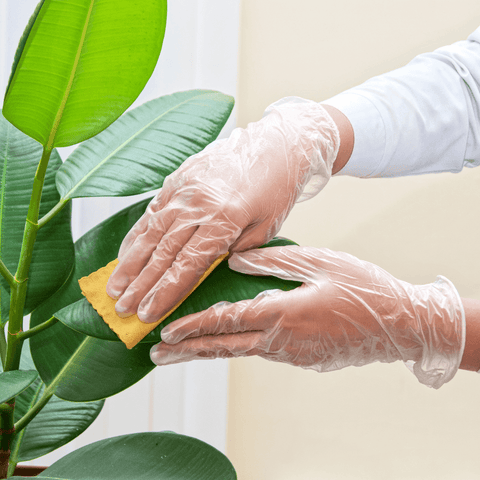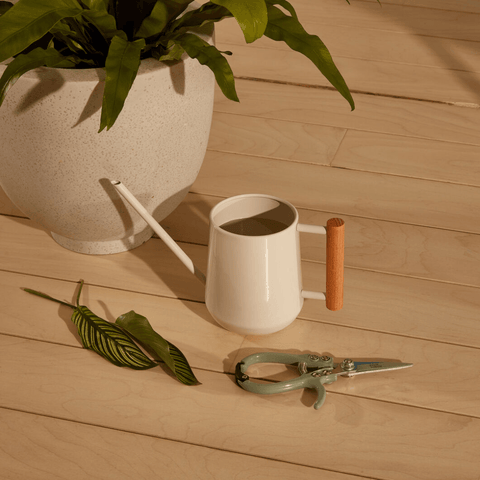Summer is officially over, and it's time to bring the houseplants back indoors for the season! We put together a list to help ensure your plants stay healthy as you transition them back indoors.
Inspection
The first step before you bring your plants back inside is to inspect them thoroughly for pests and diseases! When plants are left outdoors, they become more susceptible to illness and problems, so you want to make sure to remove the risk of spreading either to the rest of your plant collection. Check stems, under and top of the leaves, and the nooks and crevices where both meet; pests like to hide.
Clean, Treat and Prune
If you find signs of pests, prune off any heavily-infested foliage and treat the plant as needed based on the pest at hand. If there are no pests but you notice a fungal infection, remove any infected leaves to prevent the disease from spreading, and sterilize any tools, including pruners or scissors, that come into contact with those leaves before using them on other houseplants.
Any lackluster or damaged foliage that has succumbed to heavy wind or unfavorable conditions can be pruned off the plant to enhance its appearance and help the plant focus its energy on new growth! Cleaning the leaves is beneficial if hard mineral deposits, dust, or debris are on your plants' foliage, which can block from absorbing light.
Isolate
Once your plants are inspected, pruned, and groomed, you can integrate them back into your home. Once inside, we recommend isolating them for 1–2 weeks away from the rest of your plant collection. Pests can be very small (sometimes even microscopic), so at times even after treatment, they can pop up again. Even if you did not notice pests initially, their eggs could be dormant in the potting mix and hatch indoors. It never hurts to clean all plants, noticeable problems or not, with neem oil or similar before moving them inside.
Double Check
After your plants have been isolated and acclimated to your home, you should inspect them several times to ensure that pests or diseases haven't resurfaced. Then, prune and treat again as needed. For plants that are good to go, it might be good to refresh their potting mix and upgrade their planter size if required.
Welcome them Back
Once your plants are cleared, looking refreshed and cleared from isolation, you can place them into the rest of your indoor jungle! Follow up with the proper care, including their watering frequency and preferred lighting. If you notice some leaf drops—relax—your plants are adjusting to the lower light levels of being indoors. If you need extra light inside, consider adding a grow light.





Comments (0)
There are no comments for this article. Be the first one to leave a message!